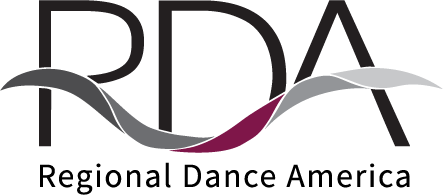Until the early 1950s, viewing beautiful, powerful dance performances was limited to urban centers across the United States. Anatole Chujoy, founder/editor of Dance News, thought that bringing together dancers and choreographers within a specified region for a dance festival could make the quality training traditionally found in larger metropolitan areas more accessible to the smaller corners of dance across America. Chujoy proposed the festival concept to Dorothy Alexander over lunch at the Russian Tea Room in New York City in the summer of 1955. Alexander, a visionary leader and director of Atlanta Civic Ballet took the Canadian model and turned it into a self-assessment, educational tool. The companies would be adjudicated ahead of time, with the best performing for a paying audience at a Gala on Saturday night. There were professional classes by master teachers from across the country, and the emphasis was more on education and learning from each other instead of competing. The other two performances were not open to the public, but rather a chance for companies to perform for their peers and learn from each other. She enthusiastically developed the idea and hosted the first regional festival in 1956 with eight companies participating. The success of this event immediately led to the formation of the Southeastern Regional Ballet Festival Association. Doris Hering was sent to Atlanta by Dance Magazine to cover the 2nd festival in 1958 and there met Dorothy Alexander. As they say, “history was made”.
George Balanchine, the director of New York City Ballet, thought this would funnel well-trained, experienced dancers to his School of American Ballet and perhaps into his New York City Ballet. But Miss Dorothy was firm in taking the opposite stance and fostering professional dance in the communities where it started.
By 1958, a group of interested individuals devoted themselves to creating a regional dance movement. Dorothy was eager to expand the organization across the United States and they worked to devise a method.
By 1959, the festival experience expanded to other regions of the United States. Alexi Ramov, director of Scranton Ballet Guild, was so inspired by his attendance at the first Festival in Atlanta that he promptly set out to organize a similar organization for his area — the Northeast Regional Ballet Association. In 1959, the Northeast Region held its first festival event. Barbara Weisberger, then director of the Wilkes-Barre Ballet, joined Ramov in sponsoring the festival.
In 1961, Josephine Schwarz developed the Craft of Choreography Conference hosted by the Northeast Region at Union College, Schenectady, NY, now called RDA’s National Choreography Intensive, to provide artistic directors the skills to choreograph works for their own companies.
In 1963 the National Association for Regional Ballet (NARB) was incorporated as a not-for-profit organization. The original advisors were absorbed into a board of directors. Subsequent presidents were William Habich, Doris Hering, Barbara Crockett, Donald Streibig, David Howard, Norman Fagan and Sheldon Soffer.
Word began to spread across the country. Ben Sommers, president of Capezio, Ballet Makers, but better known as “Mr. Capezio”, was a great supporter and chronicler of the new phenomenon. In 1963, the Southwestern Regional Ballet Association was formed and held its first festival, hosted by Barbara and David Carson of the Austin Civic Ballet. This was followed in 1966 by the formation of the Pacific Western Regional Ballet Association with its first festival hosted by Deane and Barbara Crockett of the Sacramento Civic Ballet. Lastly, the Mid-States Regional Ballet Association was formed and held its first festival in Kansas City in 1972, hosted by the Kansas City Ballet.
The National Endowment for the Arts (NEA), realizing that NARB was creating an ambience for America’s decentralized resident dance companies, awarded a major grant to the National Association of Regional Ballet in 1972. This funding enabled NARB to hire Dance Magazine associate editor and principal critic Doris Hering as Executive Director and to open an office in New York City. NARB then began its climb to preeminence among the nation’s service organizations for the arts.
Since the first festival in Atlanta, and under the guidance of the NARB, the regional ballet movement has gained impetus and has become one of the liveliest of all grass roots, cultural activities. At its beginning there were perhaps thirty-five local or civic companies spread throughout the United States. They existed in great isolation. Today, and in great part due to the NARB and RDA, the number is in the hundreds! The national organization has had an enormous impact on dance and its decentralization in this country and certainly shouldered a great deal of the responsibility for the much-talked-about dance boom of the sixties and seventies.
Over the years, NARB initiated many programs such as the Professional Wing; the Company Handbook; NARB Major Companies, the Artistic Director’s Seminar; the Choreography Connection; Regional Honor Companies, National Choreography Plan, Monticello College Foundation grants awarded for ten choreographers to attend the Choreography Conference and much more…
In 1987 the National Association for Regional Ballet closed due to lack of funding. In the ensuing months, the coordinators and presidents of three of the five regions continued to meet regularly to further the work of regional dance. The first meeting of the Ad-Hoc Committee consisting of Coordinators and Presiding Officers of each region along with former NARB Board members and interested parties, took place in the fall of 1987 in New York City in a meeting space graciously donated by the Dance Notation Bureau.
Regional Dance America (RDA) was founded in 1988 to promote the artistic development of dance companies throughout the United States, continuing the important work that was started in 1956 by the National Association for Regional Ballet. The NARB contributed to the decentralization of dance and, under its auspices, regional companies grew in stature and quality nationwide.
Lila Zali was elected President, Glenda Brown was Vice President, Barbara Crockett as Secretary, Cassandra Crowley as Treasurer and Peggy Girouard as Historian. The five women took over leadership of the new organization, banding together and working to revitalize it. The camaraderie which developed was important. The representatives knew they were not alone in this task.
Between 1990 and 2014, Regional Dance America presented an RDA Concert during the USA International Ballet Competition (IBC) in Jackson, Mississippi.
A milestone and significant new event for RDA came in 1997, when the Regions joined together for the first ever National Festival in Houston, Texas. One hundred companies, 1,500 dancers, and 500 artistic directors, teachers, chaperones, and board members attended five full days of classes, seminars, performances, scholarship auditions, and networking events. Glenda Brown, Peggy Girouard and Vanessa Brown, of Allegro Ballet, served as Festival Coordinators, Cassandra Crowley was Treasurer with planning and implementation by the rest of the national board and member directors from across the country. Nanci Imler of Central Pennsylvania Youth Ballet was Festival Consultant.
The success of the first National Festival inspired regular additional National Festivals — Pittsburgh, Pennsylvania in 2007, Montréal, Québec in 2012, Phoenix, Arizona in 2017, a first ever Virtual Festival in 2021 due to the pandemic and Daytona Beach, Florida in 2024.
After the second National Festival, sufficient funds were available to fill the executive director position, first by former NARB member artistic director and board member Gretchen Vogelzang from 2007-2017 and then by RDA alumna Erika Davis, who was appointed CEO in 2018.
In 2017, RDA created the Doris Hering Artistic Director’s Award to a RDA company artistic director for continuing education in any subject related to directing a dance company.
In 2020 RDA inaugurated a Virtual Scholarship and Recruitment Process and by 2024 was connecting RDA Dancers with over $10.5 million in annual awards.
In 2023, on the 62nd anniversary of the Craft of Choreography Conference, now called the National Choreography Intensive, a National Training Program was added to the curriculum.



